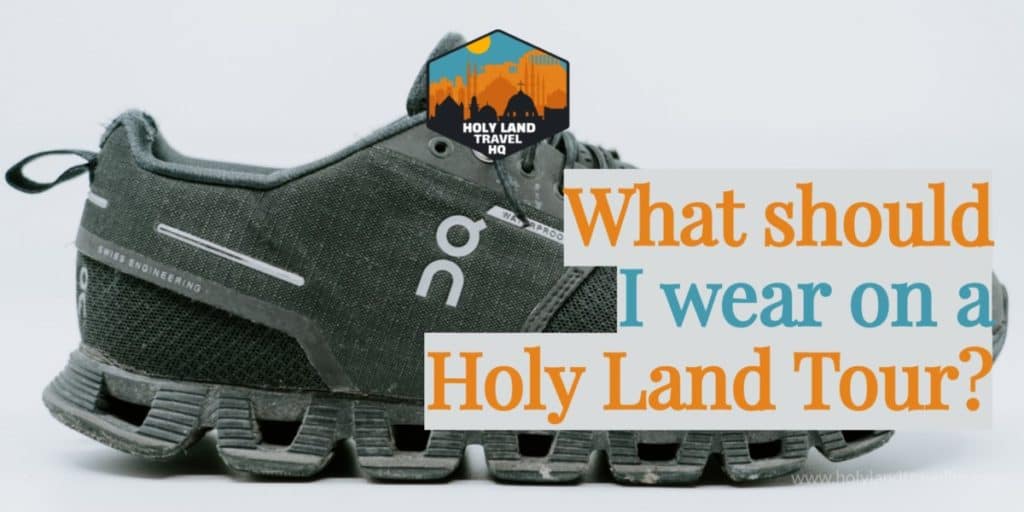
Choosing your wardrobe when you travel is a bit of an art. It’s also trial and error. I’ve traveled all around the world with the military and on my own. Over time I’ve developed an idea of what to wear and what to bring. Today we’re going to talk about what to wear. We’ll get to what to bring in a later post.
So, what should you wear on a Holy Land trip? Shoes you like to walk in, pants that breath, a shirt that airs you out, a hat that protects your ears, sunglasses that cover your eyes, and modesty attire for holy sites.
What are the best shoes to wear on a Holy Land tour?
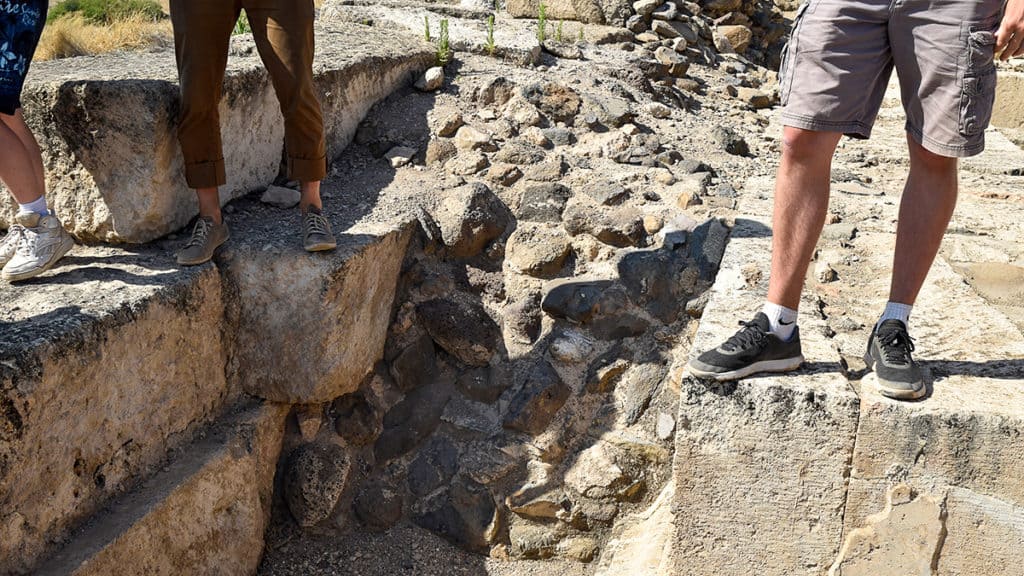
Go Basic. Be Comfortable.
Comfortable sounds like an easy answer because it is. But absolutely the right answer. Wear shoes that you like to walk in.
When I climbed Mount Fuji, I ran up the Fujinoyama Trail in a t-shirt, loose-fitting pants, and an old pair of combat boots. On the way up, I passed several middle-aged men in full on Mt Everest Expedition gear. Crampons, carbon fiber walking sticks, matching cold-weather pants and coats, and of course, air canisters. One such hiker sat on the side of the trail, sucking his can of air as I ran past him.
About two-thirds of the way up, I came across the most peculiar thing I’d seen all day. A 75-year-old woman wearing purple polyester pants, a plain white K-mart sweater, and grey grandma shoes.
I tell this story because it’s a great example of comfort versus style.
You will do a lot of walking on your tour. Some tours more than others. Don’t overthink your shoes, but don’t under think them either.
You’ll get advice to buy fancy hiking boots or something fashionable. Really what you need are closed-toed shoes that are comfortable to walk in. The guys I saw on Mt Fuji wore gear and clothing they weren’t acclimated to. The grandma wore what made her comfortable.
Hiking boots and most hiking shoes typically have ‘hard’ rubber soles. These souls are designed to ‘grip’ the dirt. But they are lousy on pavement. They easily slip when it rains.
Good walking shoes have malleability. They grip pavement by flexing across it when you step. What we are going to look for are running shoes, walking shoes, trail running shoes, or trail hiking shoes.
What kind of pants to wear on a tour to the Holy Land.
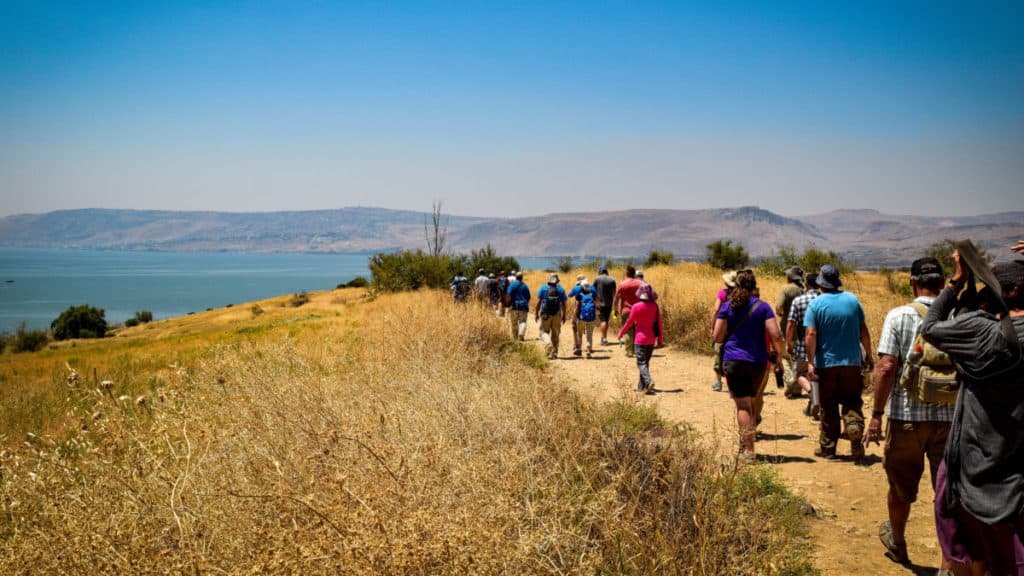
Whether you travel in the winter or the summer, my advice is the same. Get pants that breath and dry quickly. This means hiking pants.
Hiking pants are made with a thin weaved polyester fabric that wicks away moisture, are breathable, and dry quickly.
In the wet season (October through April), if it rains while you’re on a site, you won’t want to be wet the rest of the day. In the summertime, if you sweat a lot, you’ll be wet a lot. This is why I wear hiking pants whenever I travel. Even in the winter.
Any tight, or close-fitting clothes can keep in moisture and feel uncomfortable. You’ll get on the bus, off the bus, then walk around, then back on the bus and repeat. Frequent movement, especially in humid climates, can cause undergarments to bunch up and exacerbate wetness. You want to avoid this.
If you are used to heavier pants and want to bring a pair, then, by all means, do so. But for your primary pair, you’ll want something breathable.
In the summertime, I primarily wear shorts, but I have a pair of hiking pants ready to go. Israel is rather humid all year round, but especially in the summer. Shorts provide an extra level of breathability.
Any pair of shorts work. Normal shorts. Board shorts. Hiking shorts. Shorts with cargo pockets. Even jorts. I’d stay away from running shorts. For the ladies in the audience, no “boy” shorts, booty shorts, or Daisy Dukes.
In Jerusalem, I wear hiking pants almost the whole time. Mainly because of the number of Holy sites, which I’ll get to below. I don’t want to get turned away.
For the ladies, leggings are ok, but not at holy sites.
What kind of top should you wear on a trip to Israel.
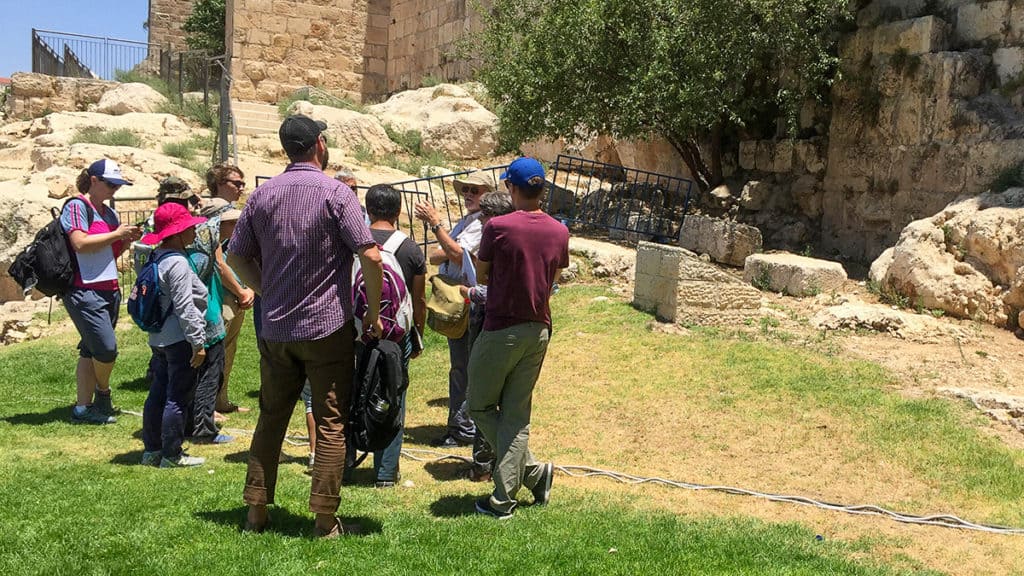
Be comfortable, block the sun.
T-shirts are probably the most common top people wear in general. The same is true in the Holy Land. You can’t go wrong with a witty comment on a nice t-shirt.
Some T-shirts don’t block UV radiation very well. Color does play a role, but overall, you’ll need to wear sunscreen. In the summertime, the UV index can get high.
If you want to protect yourself from harmful UV radiation, then a hiking shirt is the way to go. They are also called ‘travel’ shirts.
Hiking shirts are typically made with the same material as hiking pants, polyester. They dry quickly and sometimes have mesh panels under the arms and on the back for aeration.
Many companies specify the UPF (Ultraviolet Protective Factor) rating on the tag or in the product description. If it’s not there, don’t panic, it might not be advertised. My advice is to buy something you know will do the job though.
Factors that contribute to good UPF ratings in clothing are dark or bright colors, synthetic fabrics with a tight weave like polyester or rayon, and how loose the garment fits. Tight fittings can stretch the fabric and allow sunlight in. (Direct link to skincancer.org)
Dense fabric like wool and denim block UV radiation really well. But we want to stay away from these for the most part. Particularly in the summer months. Wool and denim are not synonymous with active wear. And they keep heat in. However, some people do wear wool and denim and get by just fine. If that’s your baseline normal, then that’s fine. I still recommend getting s decent travel shirt.
Some hiking shirts have tabs on the sleeves so you can roll them up and pin them down. A great feature to have.
What kind of hat to wear on a Holy Land tour.
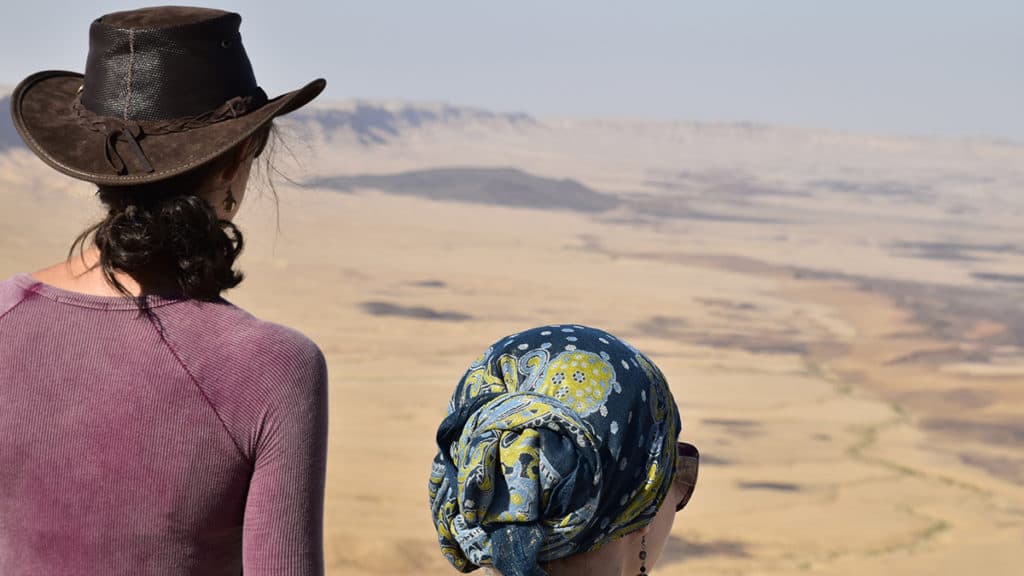
There’s a reason why Indiana Jones wore a Fedora on his travels, and it wasn’t to be stylish. It was to keep the sun off his head and out of his eyes. These are two areas on the head that get little attention when it comes to protection from the sun.
You may say, “what about my sunglasses?” We’ll talk about them in a second.
The most common area of the body for skin cancer to form is behind the ears. Many people fail to spread sunscreen there because they don’t think about it.
Some people, like myself, like to wear ball caps. A ball cap is good because you can form the brim to cover the eyes more. But it doesn’t cover your ears. So, you’ll need to put sunscreen on them.
According to skincancer.org (direct link), the best hats have a brim three inches wide or greater. I wouldn’t go too crazy here, though. There’s nothing more annoying than someone with a ten-inch brimmed sunhat standing in front of you while you’re listening to the tour guide. Choose a hat that protects you and fits your style. But be considerate of other people.
I recommend the following when choosing your hat.
-A stiff brim that is three to five inches.
-A stiff crown with aeration holes or mesh.
-An adjustable chin strap
-Made of polyester
-Has a UPF rating. If the hat is stiff, it will have some kind of hard layer in it that will block sunlight naturally.
Wear Sunglasses that Block UV radiation.
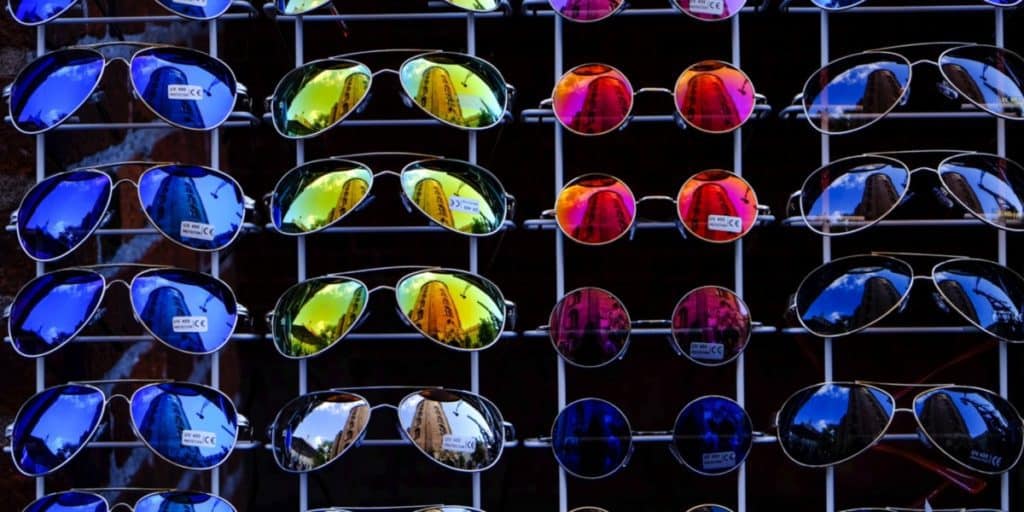
Most people get sunglasses based on how they look, not what they do for your eyes. Many brands block out glare, but not UV radiation.
UV Radiation can damage the eyes and cause cataracts. If you already have experience with cataracts, you know what I’m talking about.
The website youreyesightmatters.com states that tiny bits of UV radiation causes harm to your eyes over time. Cataracts, Pterygium, and photokeratitis are all eye conditions brought on by extensive exposure to UV radiation.
You won’t get the first two conditions on one visit to the Holy Land, or even several. But you can get them from a lifetime of exposure.
The cause of pterygium is not definitively known. However, there are some commonalities to be aware of. Extensive exposure to UV light, sand, wind, pollen, and smoke are all connected to the condition. You will experience most of these things on your trip. But again, you will need years of exposure to develop this condition.
Photokeratitis is also known as Snow-Blindness. It happens when the retina is blasted with bright light for extended periods — usually a couple of hours. You might not see a combination of bright sunlight and snow on your trip to the Holy Land. But you will certainly experience bright sunlight.
When choosing sunglasses, look for anything which notes UVA protection or blocking. Also, focus on wrap-around styles. To some people, these are stylish. To others, they look too military or athletic.
A wrap-around style is one in which the lens itself or the lens and frame cover both the front and sides of the eyes. You want to make sure everything is covered.
For some ideas on good sunglasses, check out this link to Amazon. (Direct link to amazon search)
When visiting official holy sites, be modest.
“I thought everything WAS a holy site,” you say. Well, sort of. The phrase ‘holy site’ typically refers to sites still in use as places of worship. So, the Temple Mount. The Church of the Holy Sepulcher. The Western Wall. These are all considered Holy Sites.
There aren’t any rules for the Christian and Jewish sites, but I wouldn’t wear your Daisy Dukes or muscle shirts.
Jerusalem has the vast majority of Holy Sites in Israel. Muslim sites are more stringent than Jewish or Christian sites. The Temple Mount is a Muslim site and you will have to dress modestly. In Turkey, the Blue Mosque and the Hagia Sofia will require you to dress modestly. There are a few other sites in Turkey that also have modesty codes.
Overall, it’s good practice to be prepared.
Holy Land Rules for Men’s attire.
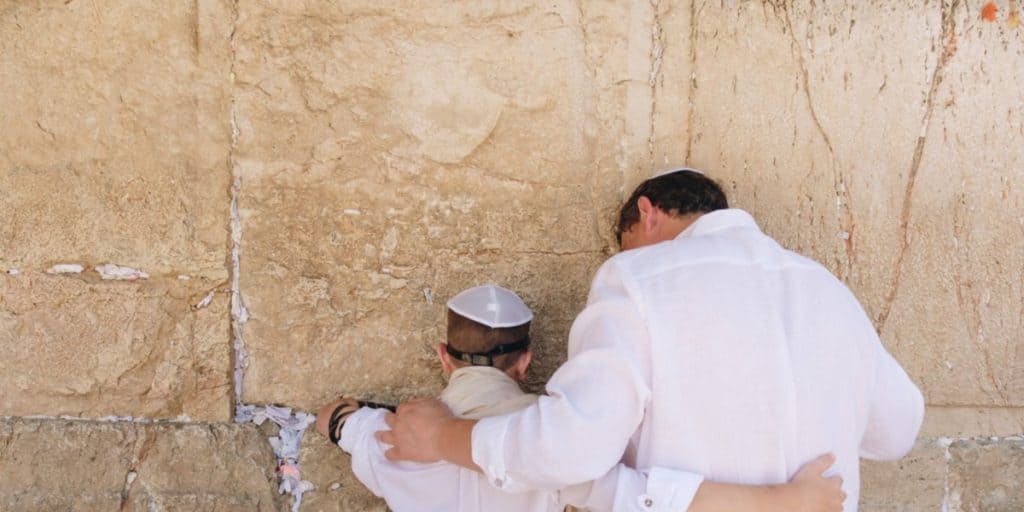
For guys, modesty means pants. Sometimes it means head coverings as well. Both of these statements are true at the Western Wall. Pants are expected on the Temple Mount.
At the Western Wall, if you forgot your hat, they have a bin of Kippahs (white hats in picture above) at the entrance. They’re cheap and made for tourists to use. You can put it back or take it with you afterward.
Volunteers at the Wall keep the Kippah bin full. But if you’re worried about germs, dig to the bottom and then keep the kippah in your pocket for future use.
Other sites in the city and around the country do not have dress code requirements.
T-Shirts are ok. For both guys and girls.
Holy Land Rules for Women’s attire.

For women, modesty means covering your legs down below the knees and your shoulders. This is where your travel skirt comes into play. Loose-fitting capri pants often work, but not always. No tight-fitting pants or leggings, though.
Generally, the Muslim sites are sticklers for women covering up. No bare shoulders or above the knee skirts or shorts. The Temple Mount is very strict. T-shirts are fine. You just need to cover the shoulders.
Sometimes holy sites will have waist wraps for women like the Western Wall has Kippahs for men. But honestly, they are gross and dirty. And by sometimes, I mean rarely. I recommend buying a lightweight shawl or wrap for yourself.
Once you are out of the city the dress code is negligible. Unless your tour guide brings it up, you should have no problem wearing shorts. Or dresses above the knee. Or sleeveless shirts.
Don’t spend too much money on a shawl or wrap. It’ll get dirty. Check out Amazon for some budget wraps (direct link to Amazon search for wraps). Anything will do.
Recommendations
Check out these stores for products and ideas.


